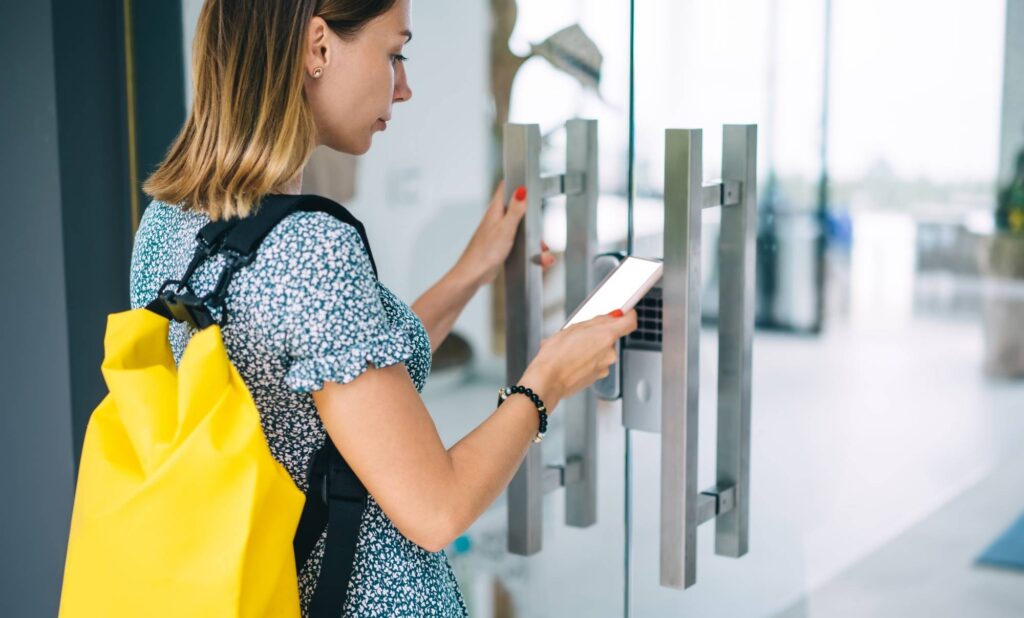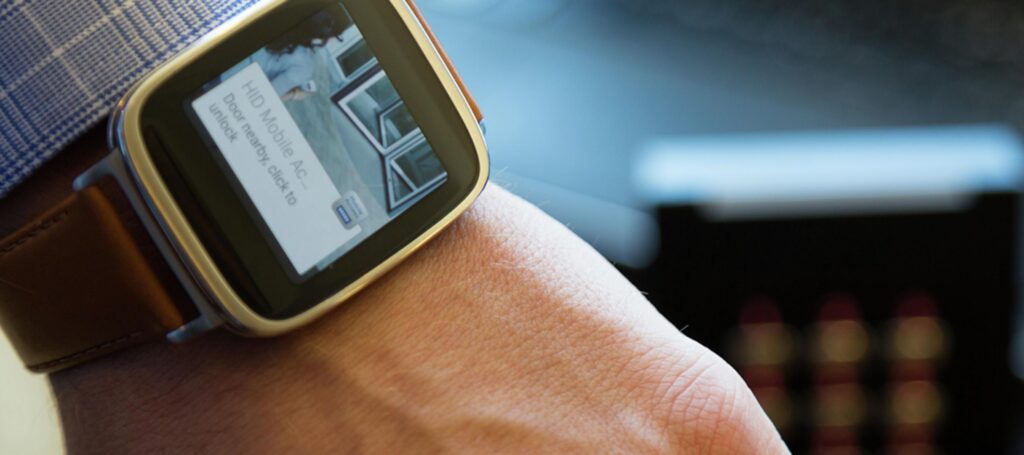“Under lock and key” — it’s an idiom used to express absolute safety. But with the most recent surge in new access control technology, etymologists might have to consider including “proximity (prox) cards” and “mobile credentialing” to the age-old adage.
Many differences exist between prox cards and mobile credentials, the most obvious being how they vary physically. But under the plastic casing of that HID cards or beneath the glass screen on your mobile device are entirely different worlds.
Let’s explore the different ways the two devices function and how user interaction differs between prox cards or mobile credentialing.
How do Mobile and Proximity Cards Work?
Prox cards and mobile credentials are means to the same end—getting through the door. Often, each credential uses similar Radio Frequency Identification (RFID) to communicate with door readers. These readers contain circuits and an antenna. The antenna emits a signal to seach for nearby devices like prox cards or credentialed mobile devices.
When a device comes into contact with a reader, the waves energize the circuit with the proximity card or mobile device. These radio waves pass along a unique set of numbers. The circuit within the reader passes the data to the controller, which compares the data against user information within the database of an access control system. If the information matches, the door unlocks.
Common Wave Frequencies in Access Control
Prox cards and mobile devices transmit data over frequencies dependent upon the technology they use. For example, prox cards and mobile devices can use a frequency of 125kHz, or low-frequency communication. But devices operating at this frequency have security vulnterabilities.
An alternative to the prox card is its successor — the smart card. Smart cards are rewritable and offer a greater level of encryption. These use a high frequency of 13.56MHz and often employ NFC technology.
Mobile access control systems commonly employ Bluetooth Low Energy (LE), which operates at 2MHz. Fewer items communicate with this frequency, therefore Bluetooth LE encounters less congestion. Additionally, the technology offers multiple layers of encrypted data during any given exchange.
Genea gives users versatility by providing Bluetooth LE and NFC technology for its customers. Enterprises with offices around the globe have successfully implemented Genea Security. And with Genea’s flexible platform, users have the option of selecting a physical card or mobile credentialing.
Mobile Devices Add Security
A debate exists among access control consumers as to whether mobile credentialing provides a heightened level of safety compared to physical credentialing. Though smartphones are stolen or hacked on occasion, mobile credentialing may reduce the risk to a facility in numerous ways, including:
- Sharing: Often prox cards and other physical credentials get shared between employees or people unaffiliated with a given building
- Cloning: Prox cards can be easily cloned using inexpensive, readily available devices
- Lost Cards: Users are less likely to misplace a cellphone as opposed to their prox card. Additionally, building teams do not need to worry about recouping cards when an employee is terminated.
The Benefits of Mobile Credentialing
While prioritizing technology and security is vital, the user experience is also important. Mobile access control has made significant strides in its convenience. For example, apps like Genea Security can run in the background of the phone, eliminating the need for users to spend time and effort opening the app.
IT and Building teams can also avoid the hassle of coordinating with tenants to collect and reprogram employee credentials.
Additionally, the advent of tenant amenity apps — software unifying various building software for tenant convenience — may be another perk of mobile access control. With these apps, building owners can give tenants new conveniences, amenities, and a sense of community instantly.
During COVID, some Genea customers used Access Control and its integrations to send notifications and health surveys to the phones of employees. AppsFlyer, a software-as-a-service company in Herzliya, Israel, used a mobile integration to provide employees with COVID updates. When an employee badged in, a notification about the office COVID status would appear on their phone.

Choosing Between Mobile or Prox Cards
While consumer skepticism still exists when it comes to mobile access credentials, many building and IT teams are choosing to embrace the new technology. The appeal lies within the versatility and ability to make instant changes in mobile credentials. But whether you hope to upgrade to a mobile-based system or wish to continue using prox cards, Genea can help. Find out how.



